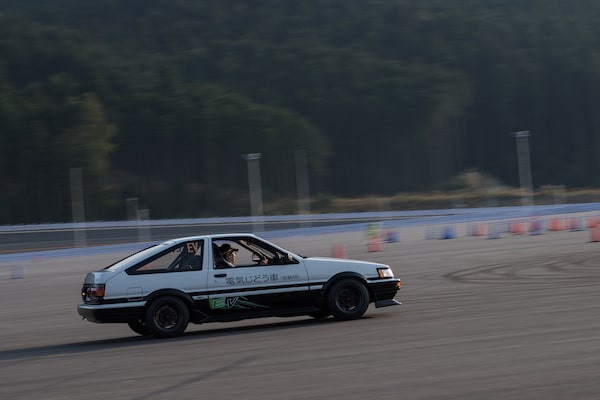
A liquid-hydrogen Corolla drives on a Toyota test track. Engineers converted a three-cylinder GR Corolla engine to combust with liquid hydrogen, stored in a tank behind the driver that must keep the fuel at a temperature lower than minus-253 Celsius.Courtesy of manufacturer
It’s one thing to stand on a stage and describe the possibilities of new technology, as Toyota’s president Koji Sato did last month at the Japan Mobility Show. It’s quite another to actually put those technologies into action. Toyota talks the talk, but can it walk the walk?
I had the opportunity to learn more about some of these developments and, in some cases, try them out on a closed track. Some were good and some, well, not so good, but points for at least trying.
On-demand battery electric vehicle
The idea: An electric car is generally dull to drive, so why not spruce it up by getting it to drive like your choice of more interesting vehicle?
What they did: An all-electric Lexus RZ had its sound and throttle reaction altered by software to simulate a Toyota Passo commuter car, a Tundra pickup truck and a Lexus LFA sports coupe.
Did it work? Sort of. At the flick of a switch, the RZ created different exhaust sounds through the internal speakers and slowed or quickened the acceleration to match the torque characteristics of the different vehicles.
Make it real? Why would I want this? “It’s more fun to drive!” said the engineers. Okay, sure. Maybe for the first few minutes.
Manual transmission battery electric vehicle
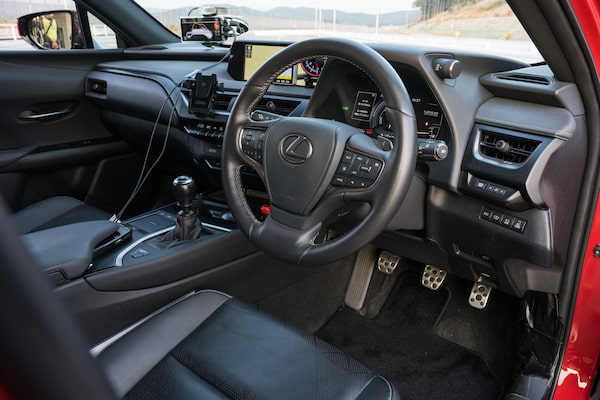
The manual-transmission simulator of the Lexus UX 300, showing three pedals and gear shift.KeitaSawa/Courtesy of manufacturer
The idea: Again, to combat the boring electric motor with its one-speed transmission and maximum torque from a standstill, engineers used software to simulate all the characteristics of a six-speed manual transmission and clutch.
What they did: I couldn’t say. Wrote billions of lines of computer code, I guess.
Did it work? Brilliantly. The all-electric Lexus UX 300 was utterly convincing in both sound and clutch feel. It would stall if the clutch was let out too quickly, and it would build in strength, appropriate to the gear and speed. The shift lever was less convincing, moving into place like a piece of gaming equipment rather than snicking into the cogs, but the engineers said they’re working on that.
Make it real? Yes. I would love the ability to switch between a one-speed transmission in traffic and then row my own gears on a country road. But it’s probably only for old guys like me. Younger drivers likely won’t have no nostalgia for such things. It’ll be a gimmick that dies with my generation.
Steer by wire and NEO steer
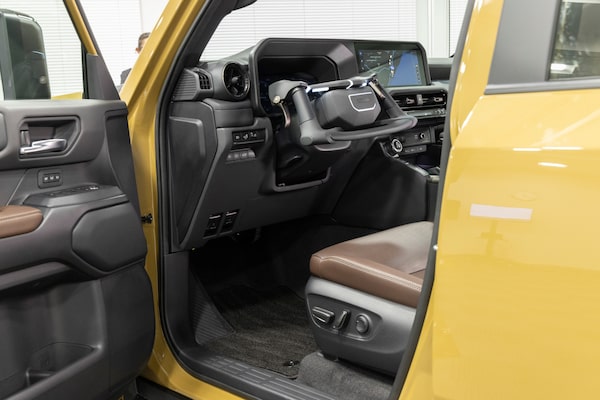
The NEO steer steering wheel, with throttle and brake paddles, and no pedals on the floor.Courtesy of manufacturer
The idea: The steering wheel has no shaft, but instead transmits its movements by electric signal to the wheels. For NEO steer, the wheel includes levers for throttle and brakes, to benefit drivers who cannot use their legs.
What they did: Wrote more computer code, which included restricting the movement of the steering wheel to one half-turn to each of left and right, so the driver’s hands are never removed.
Did it work? Yes, very well, but it took a little getting used to. The steering movement was not linear – it turned the driving wheels more quickly with further turning of the steering wheel. The hand controls on the NEO wheel were simple, however, and would be much less costly than the hydraulic controls on existing steering wheels for drivers with disabilities.
Make it real? It’s cheaper and lighter, so I’m sure it’s inevitable in the next decade.
Interactive reality in motion
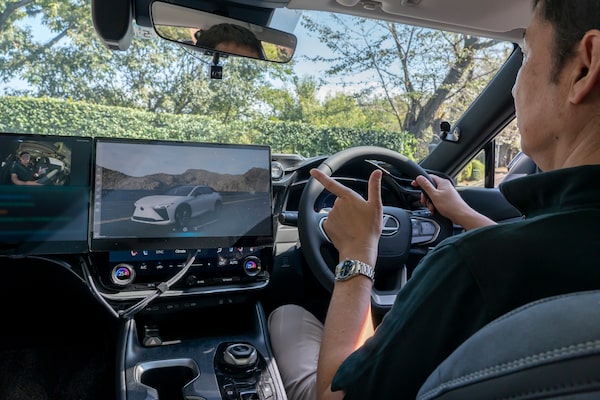
A test driver demonstrates the pointing gesture of the Interactive Reality In Motion.Courtesy of manufacturer
The idea: Cameras inside the car watch the driver and react to the pointing of fingers as part of the command process.
What they did: Engineers from the Woven By Toyota software division trained the car’s computer to combine pointing with location, so the driver can point at a restaurant while driving past and ask the car about its menu or make a reservation. The driver can even point at some random pedestrian and ask the computer about the person’s shirt, and maybe even order a similar shirt from a store.
Did it work? Sort of. I drove past some signs that pretended to be store fronts, and half the time the car’s computer picked up on my questions and half the time it didn’t.
Make it real? No. This is just terrifying. I can imagine pointing at a parking space and telling the car to go park there, and it telling me, “I’ll be back…”
Liquid hydrogen concept
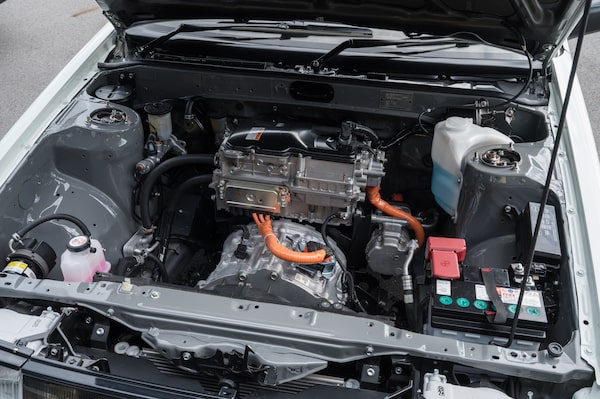
The three-cylinder combustion engine of the liquid-hydrogen Corolla.Courtesy of manufacturer
The idea: Use hydrogen as a liquid fuel for combustion engines, instead of as a gas in a fuel cell to power electric motors, as with current hydrogen-fuelled vehicles.
What they did: Engineers converted a three-cylinder GR Corolla engine to combust with liquid hydrogen, stored in a tank behind the driver that must keep the fuel at a temperature lower than minus-253 Celsius. There’s no requirement to pressurize the fuel as there is with the gas, so refuelling is simpler and faster.
Did it work? Sure it did. A Toyota race driver took me for a fast spin, churning through the car’s manual gearbox and stomping on the, er, fuel pedal at every opportunity.
Make it real? It has a long way to go to see production, but it’s the right direction. Toyota has been working for several years on a GR Corolla race car that’s powered by this technology. The main challenge is in maintaining the extreme low temperature of the fuel tank and developing a fuel pump to work with such frigid fuel, but Toyota has no plans to give up on the technology.
 Mark Richardson
Mark Richardson